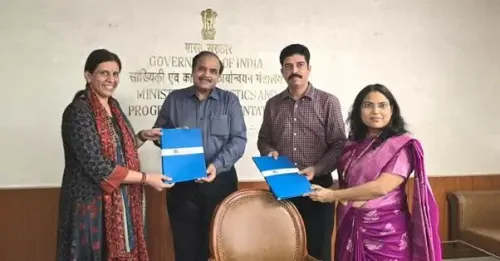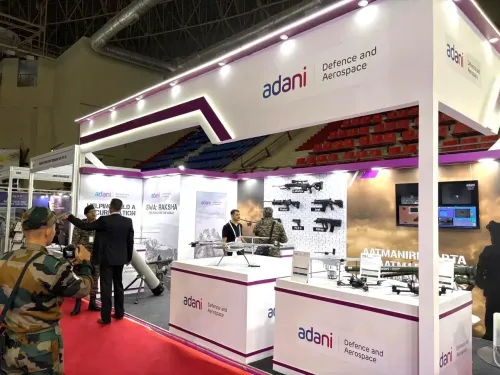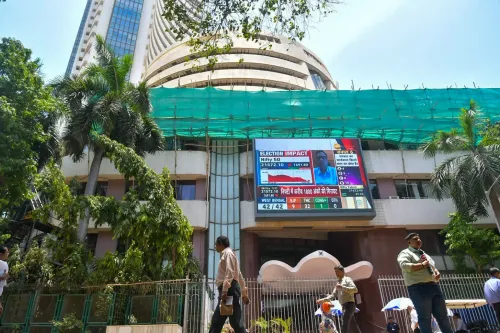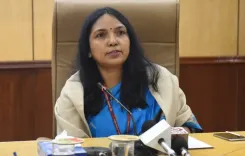Finance Minister Sitharaman: Borrowing for Development
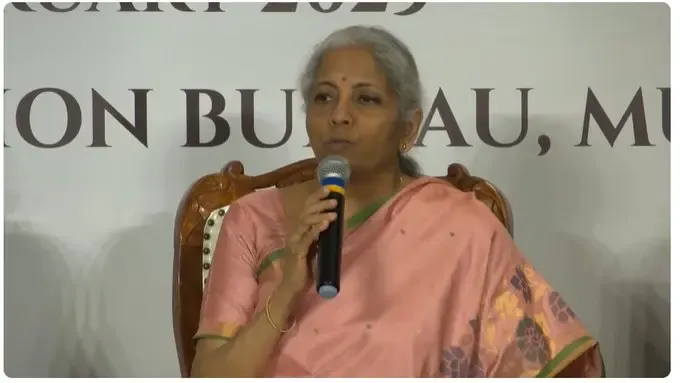
Synopsis
Key Takeaways
- Nirmala Sitharaman asserts borrowing is for building.
- Fiscal deficit targeted below 4.5% of GDP.
- Capital expenditure increased by 10.2%.
- Taxpayer concessions included in the Budget.
- Focus on rural development and infrastructure.
Mumbai, Feb 17 (NationPress) Finance Minister Nirmala Sitharaman stated on Monday that the government under Prime Minister Narendra Modi is implementing a significant transformation in Budget-making, which prioritizes a responsible management of taxpayer funds. This is evident in the borrowings aimed at capital asset development.
"If we borrow, we borrow to build," she asserted.
During her speech at a post-budget meeting with industry representatives, the Finance Minister pointed out that the 2025-26 Budget has committed to maintaining a fiscal deficit below 4.5% of GDP, as outlined in the July Budget.
The capital expenditure (Capex) for the 2025-26 Budget has seen a 10.2% increase compared to the previous year, with an allocation nearing Rs 16 lakh crore.
"Indeed, we have made substantial increases in the Budget for capital expenditure," the Finance Minister stated.
Sitharaman's remarks serve as a strong rebuttal to the opposition's assertion that the capital outlay has not seen an increase in the Budget.
Additionally, she emphasized that the Budget provides taxpayer concessions while ensuring provisions for capital asset enhancement. The Budget allows taxpayers the choice to save, spend, or invest, she remarked.
She expressed gratitude to the Prime Minister for recognizing and rewarding taxpayers with income tax relief for those earning up to Rs 12 lakh annually. Approximately 1 crore middle-income taxpayers are projected to benefit from this initiative.
Sitharaman is engaging with industry stakeholders in the commercial capital to discuss critical issues and opportunities stemming from the Union Budget 2025. This engagement is part of a broader outreach effort to connect with business leaders and policymakers regarding economic priorities.
The discussions are anticipated to encompass policy measures, taxation, and industry-specific initiatives outlined in the Budget.
The 2025-26 Budget aims to foster employment-driven inclusive growth, supported by investments in the agricultural and rural sectors, MSMEs, and exports while adhering to a path of fiscal consolidation.
Besides infrastructure, rural development and agriculture will be pivotal in increasing spending. The Centre’s overall expenditure is projected to rise from Rs 47.2 lakh crore in FY25RE to Rs 50.7 lakh crore in FY26BE.
The primary areas addressed in the Union Budget include taxation, power, urban development, mining, the financial sector, and regulatory reforms. These focus areas are crucial to the government’s commitment to fostering growth, improving infrastructure, enhancing governance, and ensuring sustainable development across multiple sectors.

